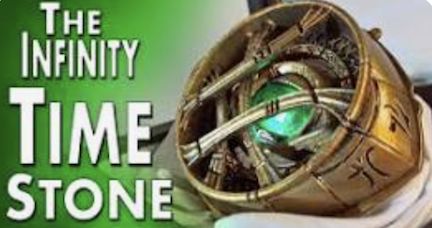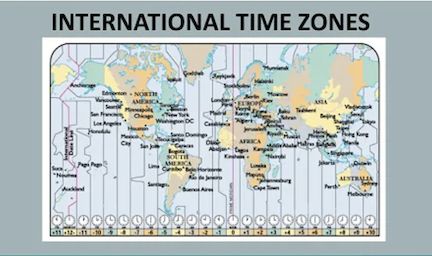Trusting God with Time
We all want to be Dr. Strange.
In the Marvel Cinematic Universe, there are six infinity stones. They are a group of cosmic gems that grant their owner great power. One of these six stones is the Time Stone.

The time stone grants its owner the power to rewind and fast-forward time. Dr. Strange discovered the stone in his origin movie, using it to trap the villain Dormammu in a time loop so that Dormammmu couldn't destroy earth. Then, he wears the stone throughout Infinity War.
But Thanos, a powerful, purple humonoid with superhuman strength and power, "used the Infinity Stones to 'snap' his fingers, which resulted in the instantaneous destruction of half of all life in the universe, effectively wiping out half of all living beings across the cosmos."
As the good guys are fighting the villain Thanos and his army, Dr. Strange tells Iron Man that if he has to choose between giving up the stone and saving the lives of the Avengers, he’ll prioritize the stone. Yet, later in Infinity War, he uses the power of the Time Stone to look into the many possible futures that could play out. He gleans from this knowledge that he will have to give up the stone to Thanos in order for the Avengers to eventually defeat him.
Like Dr. Strange, who wouldn't want to control time? In a way, by controlling time, you could effectively control everything else, because you could leap from from past to present, righting wrongs or forseeing future disasters and averting them.
Yet it is only as we give up trying to control everything, as Dr. Strange gave up the power of the Time Stone to save the universe, that we’ll find a release of freedom to simply trust God and enjoy life here in the present.
As Psalm 90:12 says, "Teach us to number our days, that we may gain a heart of wisdom" (NIV).
And as the Lord Himself said, "Therefore do not worry about tomorrow, for tomorrow will worry about itself. Each day has enough trouble of its own" (Matthew 6:34, NIV).
God's Time Zone
For ages, people used the sun to determine what time it was where they were. Every community set its clocks to noon based on when the sun reached its highest position in the sky; as a result, when it was noon in Washington, D.C., the local time in New York City was already minutes ahead. Before the days of long-distance travel, differences in local times weren’t a big deal. That changed with the rise of railroads in the 1800s. Although it was now possible to travel significant distances faster than ever before, a multitude of local times, particularly in large countries such as the United States, made things confusing when it came to train schedules.
On November 18, 1883, America’s railroads began using a standard time system involving four time zones: Eastern, Central, Mountain, and Pacific. Within each zone, all clocks were synchronized. The railroad industry’s plan was adopted by much of the country, although the time-zone system didn’t become official across the United States until the passage of the 1918 Standard Time Act, which also established daylight saving time. By the mid-20th century, most of the world had adopted a system of international time zones, in which the planet is divided into 24 zones spaced at intervals of approximately 15 degrees of longitude. In 1884, delegates from more than two dozen nations met at the International Meridian Conference, held in Washington, D.C., where they chose the line of longitude running through the Royal Observatory in Greenwich, England, as the official prime meridian, or zero point of longitude.
Today, Russia, the world’s largest nation in terms of land mass, has 11 time zones.
But China, the fourth-largest by area, has just 1 time zone! Before 1949, China had five time zones. After the rise of communism, the government required the entire country to operate on China Standard Time for the sake of national unity.

The Ancient Greek word kairos (καιρός) means "the right time" or "opportune moment" (as opposed to chronos (Χρόνος) which means actual "time" and refers to a quantitative or exact measurement of time). It's used to describe a special moment when it's the best "time" to say or do something.
Many years before the Greek NT was composed, the writer of Ecclesiastes tried to help humanity with achieving a unity of timeliness which the Chinese government will never achieve through a mandated, nationwide time zone. Ecclesiastes 3:1-11 offers us the opportunity, as God’s children, to have a unified perspective of kairos (καιρός) — time.
3:1 There is a time for everything,
and a season for every activity under the heavens:2 a time to be born and a time to die,
a time to plant and a time to uproot,
3 a time to kill and a time to heal,
a time to tear down and a time to build,
4 a time to weep and a time to laugh,
a time to mourn and a time to dance,
5 a time to scatter stones and a time to gather them,
a time to embrace and a time to refrain from embracing,
6 a time to search and a time to give up,
a time to keep and a time to throw away,
7 a time to tear and a time to mend,
a time to be silent and a time to speak,
8 a time to love and a time to hate,
a time for war and a time for peace.9 What do workers gain from their toil? 10 I have seen the burden God has laid on the human race. 11 He has made everything beautiful in its time. He has also set eternity in the human heart; yet no one can fathom what God has done from beginning to end.
ALTERNATE APPLICATION: In the end, it isn't so much about how you render time, but how you use it.
"Making the best use of the time, because the days are evil" (Ephesians 5:16, ESV).
"Walk in wisdom toward outsiders, making the best use of the time" (Colassians 4:5, ESV).
Timing Change
On a conventional piston engine — which is found in virtually all modern passenger cars — the up-and-down motion of the pistons turn the crankshaft, and the crankshaft turns the camshaft, which opens the valves at the proper time. What typically connects the crankshaft to the camshaft is either a cogged timing belt riding on pulleys or a timing chain riding on sprockets. Both setups look somewhat like a bicycle’s chain and sprockets.
If the timing belt or timing chain fails, the engine stops running immediately, potentially resulting in expensive internal engine damage.

Though it’s certainly a matter of opinion that’s based largely on your priorities, it’s generally felt that timing chains are better than timing belts. While most timing belts are supposed to be replaced every 60,000 to 120,000 miles, many timing chains end up lasting the life of the car. That can be significant because replacing a timing belt is a fairly complicated job that can easily cost $500 to $1,000.
Time is a gift from God. It must be used wisely, circumspectly. And what's more, it must be in sync with the engine that drives us — God!
If we are out of sync with God's will and purposes, like a vehicle in disrepair, we'll just end up lurching and sputtering down the road. When we are out of rythmn — out of timing — with God's will and purposes, our lives will get pretty bumpy and ineffectual.
Each day presents us with the opportunity for a timing change of our hearts, getting us in sync with God's will and purposes for our days, for our lives. Consider it daily maintenance which will keep us in rythmn with the heart of God.
To do otherwise could potentially be spiritually quite costly.
"There is a time for everything, and a season for every activity under the heavens" (Ecclesiastes 3:1, NIV).
"Making the best use of the time, because the days are evil" (Ephesians 5:16, ESV).